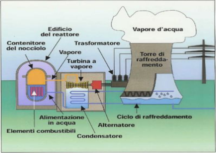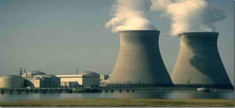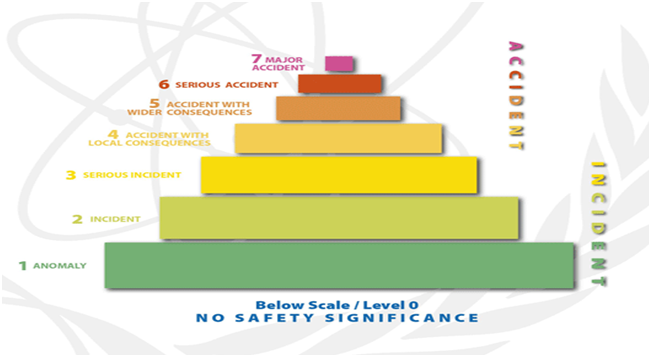|
FAQ
Q1 - Roles and responsibilities for a nuclear program
The major stakeholders in launching and implementing a nuclear
program are the Government, the Operator and the Regulator.
The
government
is responsible for establishing an effective legal and national
framework for nuclear safety and security.
The
licensee/operator
retains the prime responsibility for the safety throughout the
lifetime of facilities and activities, and this responsibility
cannot be delegated.
The
Nuclear Regulatory Authority
(NRA), established by law, has the role and responsibility to
establish the safety criteria and requirements and review how
they are considered and implemented during siting, construction,
operations, waste management, decommissioning, etc, as well as
to authorize and control the related activities.
-
Q2 - What is intended for public communication and transparency?
The communication with public deserves a particular attention while
implementing a nuclear program. It is important that the public is
fully informed about the rational and reasons behind the
introduction of nuclear power, the site selection for the NPP and
the arrangements for ensuring safety of nuclear power plants
Before final decisions are made it is suggested that programs of
public consultation are developed, involving local communities,
leaders, politicians, non-governmental organizations and other civil
society stakeholders.
In communicating with public the regulatory authority. being
independent , has an important role and shall build and achieve the
public confidence and credibility.
It is important that the public has confidence in the communication
from the nuclear regulatory authority.
The communication should be
transparent
and appropriately balanced between openness and necessary
confidentiality restrictions. It shall aim to achieve public
confidence in particular from the side of the Regulator having an
independent function.
Efficiency in decision-making by governmental authorities is
increasingly dependent upon public trust. Public communication is
one of the keys to the future of nuclear power
Q3 - How is the site for a nuclear power plant selected?
The
site selection to
construct a nuclear power plant is carried out on the basis of
specific analyses to verify the technical feasibility of the NPP on
the proposed site and to verify that the NPP does not create
unacceptable risks to the public and the environment
The analyses to be performed refer to the assessment of the
following:
· site characteristics
· severity of external events (natural events and
non-natural events) and their probability
· the way the NPP adversely affect the environment. the
population and the local activities
If the site analysis indicates deficiencies, which cannot be
compensate by engineering measures, the site is rejected. When a
site is found suitable after a preliminary screening process, a
systematic and more detailed analysis is performed to identify all
measures to be implemented (e.g. in the deign of the NPP) to
minimize the effects of the NPP on the environment and vice versa.
Q4 -
When is a nuclear power plant considered to be safe?
A nuclear power plant (NPP) is safe when it simultaneously complies
with the following conditions:
• The conception of the NPP is conceived and design
according to basic safety principles and requirements
• Appropriate measures are taken to face possible accidents
according to defense in depth principle
• The operational staff is competent and operate according
to approved technical and administrative procedure
• The operation is carried out by persons applying a sound
“safety culture”.
Q5 -
Why are nuclear power plants always situated along a river or on the
coast?
The answer to this question is actually very simple: because they
need cooling-water. Not only nuclear power plants need cooling-water
for that matter. Also “classic” power plants (using gas, coal or
fuel oil as heat source) need it and are therefore situated near
rivers or canals.
The cooling takes place in the
condenser
and requires large quantities of cooling-water. After having used
the cooling-water in the (nuclear) power plant, it is returned to
the river or to the sea. It is obvious that this water does not
contain any radioactive elements but it is warmed up once coming out
from the condenser.
In case the same water is re-used to cool the condenser, it needs to
be first cooled down in the
cooling towers.
Q6 -
How is electricity produced in a power plant?
|
A nuclear power plant produces electricity in the same way
as non-nuclear power plants: the heat generated by the
nuclear reactions (in non nuclear power plant the heat is
produced by combustion of oil ,gas or coal) is producing
high quality steam which makes the
turbines running and through an
alternator
electricity is produced and transferred to the electrical
network.
|
 |
Q7 -
What is the "white smoke" coming out of the towers of nuclear power
plants?
|
The
“smoke” coming out of the
cooling towers
of the nuclear power plants is steam and is not radioactive
because it is not in contact withy the primary circuit. The
cooling towers serve for the evacuation of heat resulting
from the condensation, within the condenser, of steam coming
out of the turbines. |
 |
Q8 - What is the radioactivity?
|
Radioactivity is the spontaneous emission of energy from
unstable atoms (isotopes).
Radioactivity is no invention of man... it is a natural
phenomenon ! It was discovered by accident in 1898 by the
French physicist Henri Becquerel while he studied a mineral
containing uranium. He had stored a photographical plate
next to some uranium salts, and it was printed off without
being exposed to light. Henri Becquerel thus concluded that
uranium emits invisible rays, resembling to X-rays, that
were discovered the year before by the German physicist
Wilhelm Roentgen.
The ICRP (International Commission for Radiological
Protection) establishes
the effective dose limit of 1 mSv/yr for the public,
as average in 5 years. It does not include the effective
dose that the public receives from the natural background.
The world’s average annual effective radiation dose for the
public due to
natural background is 2,4 mSv/yr.
In Italy the average natural background radiation dose is
3.2 mSv/yr. |
Q9 - What is a radioactive waste?
The radioactive waste are radioactive substances containing
radionuclide. The radionuclides can have a natural origin (e.g.
Radium 226) or artificial origin (e.g. Cesium 137)
The radioactive characteristic of the radioactive waste are
determined by:
• the
type of radionuclide
and emitted radiations (alpha, beta, gamma),
• the
activity
in terms of number of spontaneous emission per unit time
(expressed in Becquerel),
• the
half-life
defined as the time necessary for the radioactivity of a
radionuclide to become half
The radioactive waste is produced by the nuclear industry as
well as by the use of radioactivity in the medical and
industrial applications.
The table below shows some values of
the half-life of certain radionuclide
|
Radionuclide |
halflife |
Radionuclide |
halflife |
|
Iodine 131 |
8,0 days |
Radium 226 |
1 600 ans |
|
Cobalt 60 |
5,2 ans |
Carbon 14 |
5 730 ans |
|
Tritium |
12,2 ans |
Plutonium 239 |
24 110 ans |
|
Strontium 90 |
28,1 ans |
Neptunium 237 |
2 140 000 ans |
|
Césium 137 |
30 ans |
Iodine 129 |
15 700 000 ans |
|
Américium 241 |
432 ans |
Uranium 238 |
4 470 000 000 ans |
Q10 –
What is the radioactive release of a NPP in normal operation?
The gaseous radioactive waste produced during operation of a nuclear
power plant is released in a controlled way through the stacks.
Liquid radioactive waste is also released in a controlled way. The
released radioactivity (gaseous
and liquid effluents)
to the environment must be inferior to the limits imposed by the
Authorities. These limits, of course, are very much lower than the
potentially dangerous limits.
Q11 -
What is the International Nuclear and Radiological Event Scale
(INES)?
The scale was designed by an international group of experts in 1989
at the IAEA. It provides a
classification of the events
at nuclear power plants, or other nuclear facilities, in function of
the safety significance of the event.
It is also a tool for promptly communicating to the public in
consistent terms the safety significance of reported nuclear and
radiological incidents and accidents
 |